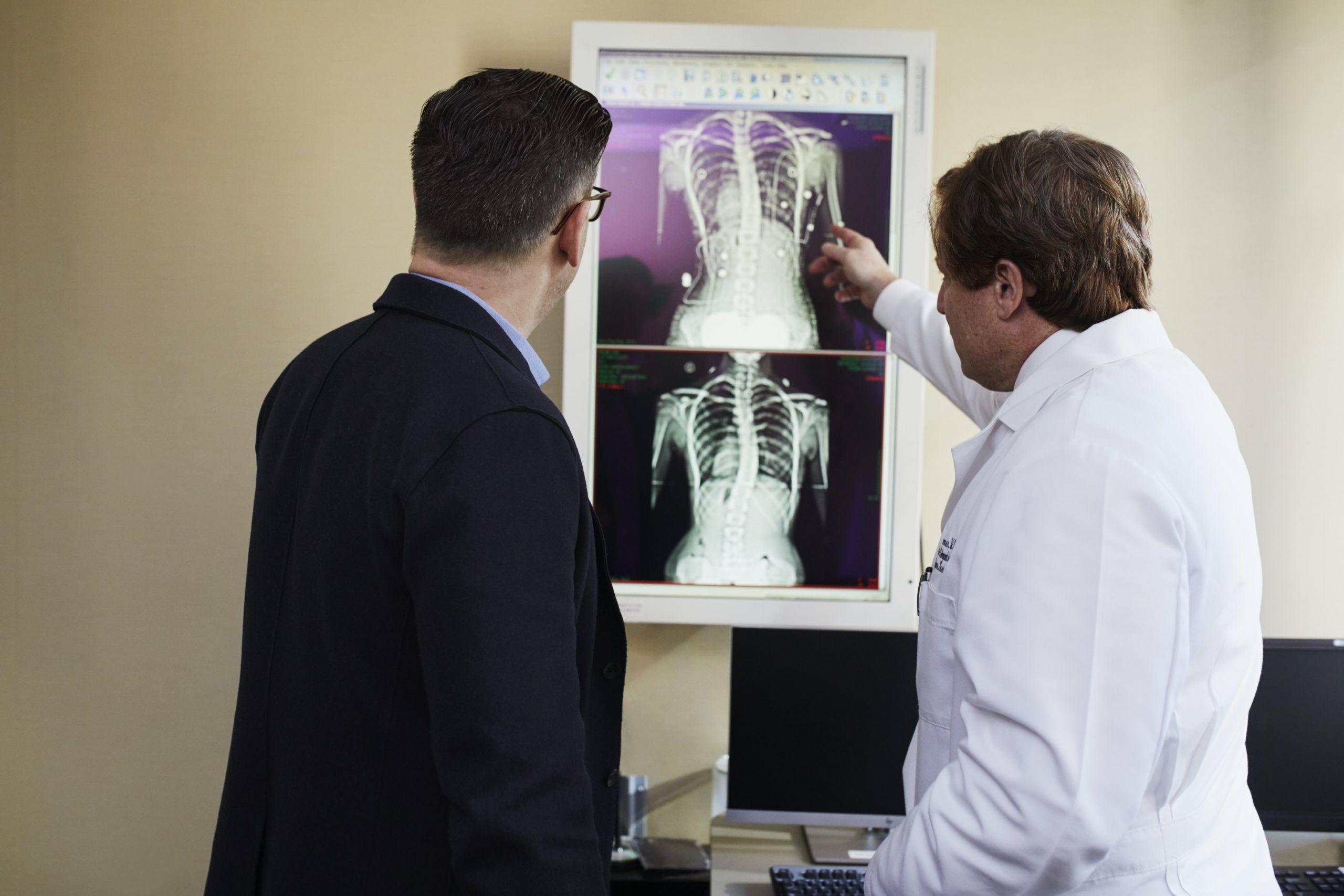The clinical subspecialty that uses fluoroscopy, CT, and ultrasound to guide percutaneous (through the skin) procedures such as performing biopsies, draining fluids, inserting catheters, or dilating or stenting narrowed ducts or vessels.

Angioplasty
An invasive procedure done to open a partially blocked blood vessel so that blood can flow through it more easily. During the procedure, a thin flexible tube (catheter) is inserted through an artery in the groin or arm and carefully guided into the artery that is narrowed. Once the tube reaches the narrowed artery, a small balloon at the end of the tube is inflated. The pressure from the inflated balloon presses fat and calcium deposits (plaque) against the wall of the artery to improve blood flow. Once the fat and calcium buildup is compressed, a small, expandable wire-mesh tube called a stent is sometimes inserted into the artery to hold it open.
Thrombolysis
A minimally invasive procedure using x-ray guidance and a contrast material that helps define the blood vessel. Your radiologist will insert a catheter through the skin into a vessel (artery or vein) and maneuver it to the site of the thrombosis, or blockage. The blood clot will then be dissolved by delivering medication directly to the blood clot or by positioning a mechanical device at the site to break up the clot.
IVC Filter
An IVC filter is a small piece of metal that can be put into the inferior vena cava to prevent blood clots in the legs from going up to the lungs. An interventional radiologist will insert a needle into a vein in your neck or groin to put a catheter into your blood vessel so the IVC filter can be inserted. By using x-ray, the doctor can see the filter and move it to the right place.
Transjugular Intrahepatic Portosystemic Shunt (TIPS)
A small, tubular metal device commonly called a stent that is placed in veins in the middle of the liver to improve blood flow to and from the organ. In a TIPS procedure, interventional radiologists use image guidance to make a tunnel through the liver to connect the portal vein to one of the hepatic veins. A stent is then placed in this tunnel to keep the pathway open.
Ureteral Stent
A thin, flexible tube threaded into the ureter to help urine drain from the kidney to the bladder or to an external collection system.
Uterine Fibroid Embolization
Uterine fibroid embolization (UFE) is a minimally invasive procedure used to treat fibroid tumors of the uterus which can cause heavy menstrual bleeding, pain, and pressure on the bladder or bowel. It uses a form of real-time x-ray called fluoroscopy to guide the delivery of embolic agents to the uterus and fibroids. These agents block the arteries that provide blood to the fibroids and cause them to shrink.
For more information visit: https://www.radiologyinfo.org/en/info.cfm?pg=ufe
Percutaneous Gastrostomy Tube Placement
A safe and effective way to provide food, liquids, and medications (when appropriate), directly into the stomach through a tube placed in the abdomen. The procedure is done for people who are having difficulty swallowing and can’t consume enough food or liquids by mouth to maintain adequate nutrition.
Biopsies
A medical test performed by interventional radiologists to identify the cause of a lump or mass, or other abnormal condition in the body. During the procedure, the doctor inserts a small needle, guided by X-ray or other imaging techniques, into the abnormal area. A sample of tissue is removed and given to a pathologist who looks at it under a microscope to determine what the abnormality is.
Thoracentesis
A procedure to remove fluid from the space between the lungs and the chest wall called the pleural space. It is done with a needle (and sometimes a plastic catheter) inserted through the chest wall. This pleural fluid may be sent to a lab to determine what may be causing the fluid to accumulate in the pleural space.
Central Venous Access
Insertion of a tube beneath the skin and into the blood vessels so that patients can receive medication or nutrients directly into the blood stream or so blood can be drawn.
Y-90 Radioembolization
Radioembolization is a minimally invasive procedure that combines embolization and radiation therapy to treat liver cancer. Tiny glass or resin beads filled with the radioactive isotope yttrium Y-90 are placed inside the blood vessels that feed a tumor. This blocks the supply of blood to the cancer cells and delivers a high dose of radiation to the tumor while sparing normal tissue. It can help extend the lives of patients with inoperable tumors and improve their quality of life.
For more info visit: https://www.radiologyinfo.org/en/info.cfm?pg=radioembol


